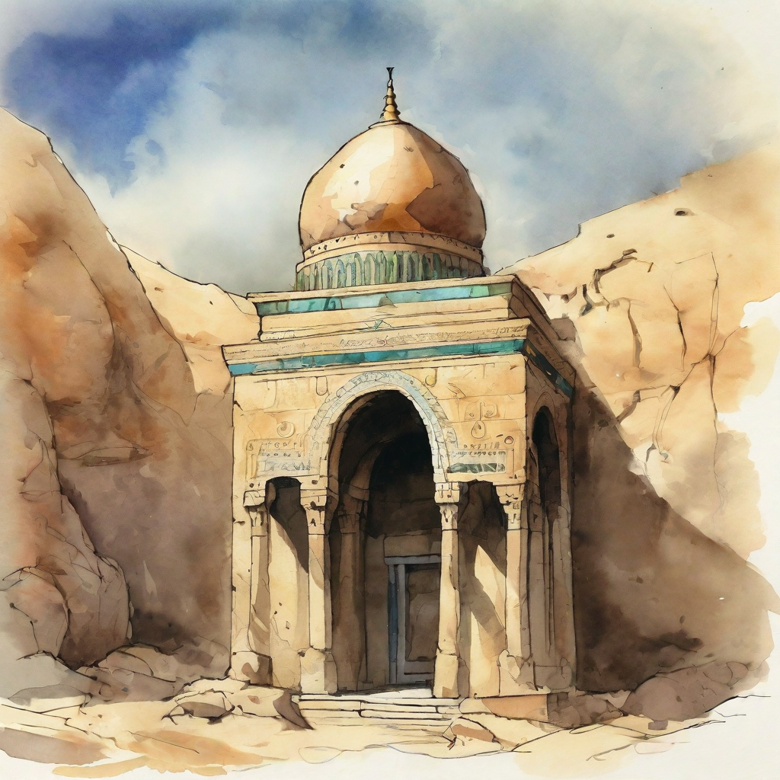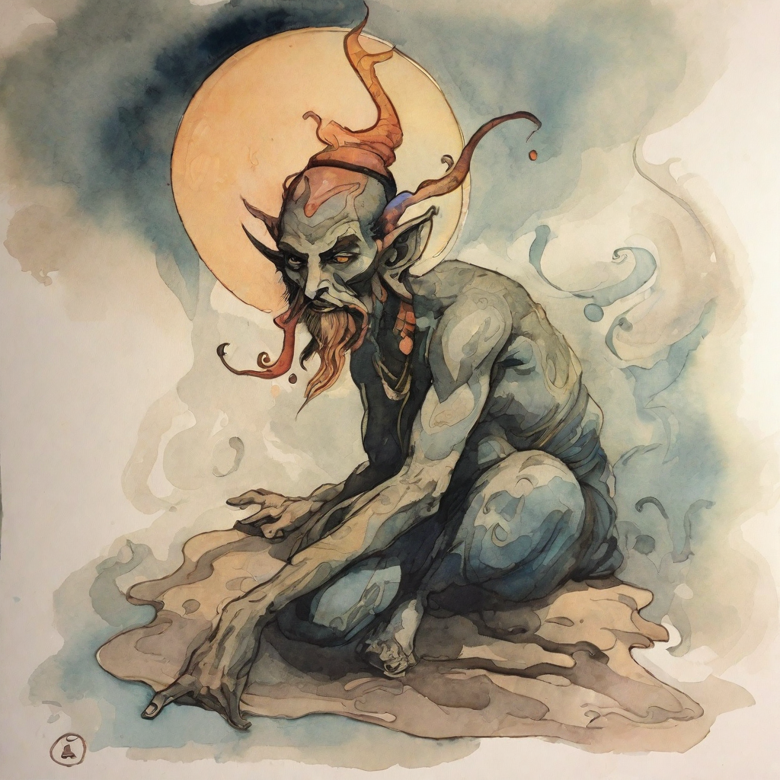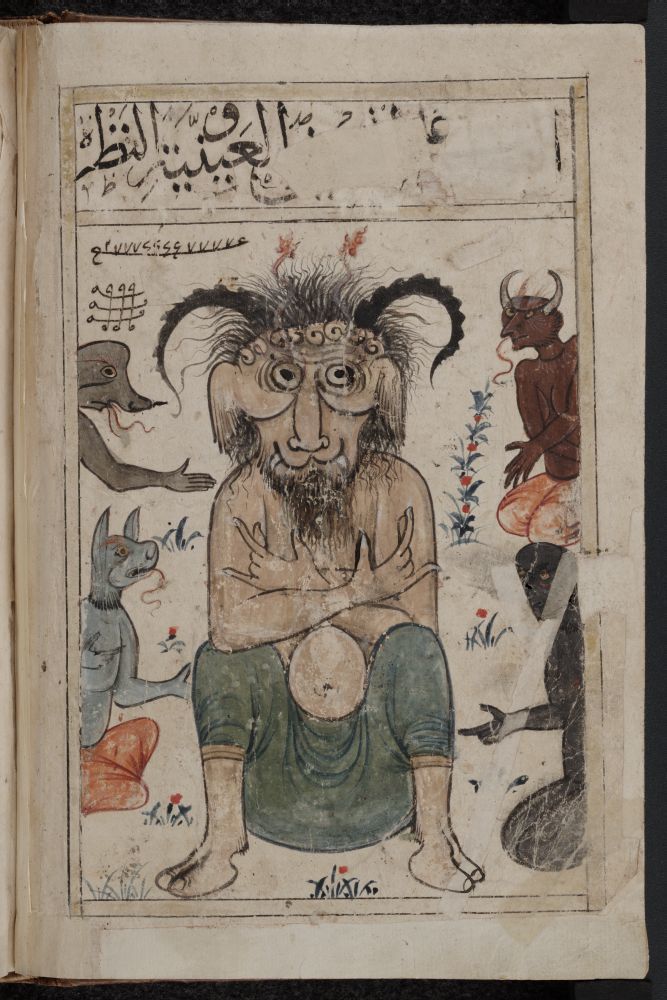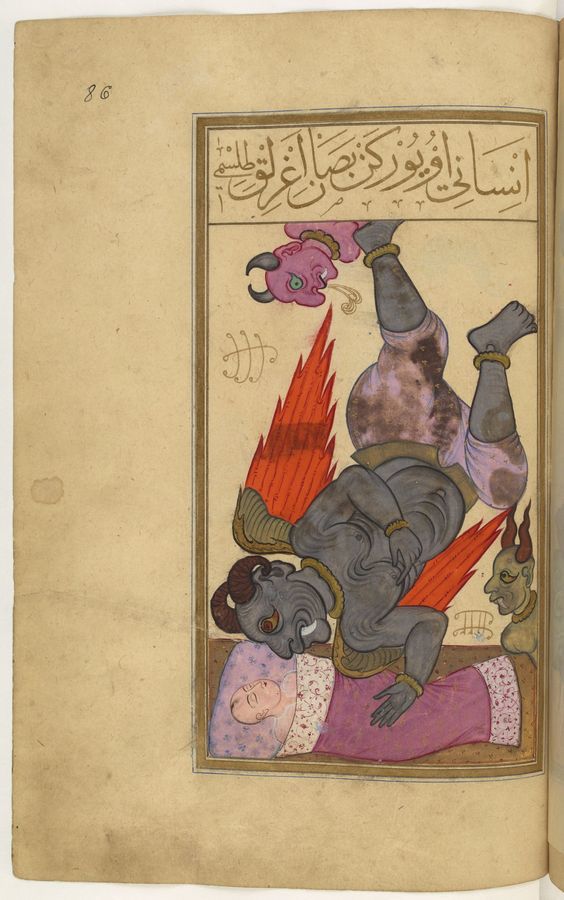
When the Quran describes the creation of jinn from "smokeless fire," it is not meant to provide a scientific explanation but rather to convey a symbolic and metaphorical understanding.
While the concept of "smokeless flame" in religious texts is not meant to be a scientific description, there are a few similarities that can be drawn between plasma and a metaphorical "smokeless flame":
Plasma, as understood in scientific terms, is a state of matter consisting of ionized gas with highly energized particles.
Ionization: Plasma is formed when atoms or molecules gain or lose electrons, resulting in the presence of charged particles (ions) and free electrons. Similarly, the idea of a "smokeless flame" could be seen as a state of fire or energy where the particles are highly energized and possibly ionized.
High Energy: Plasma is known for its high energy state. It can generate intense heat and emit light. Similarly, a "smokeless flame" could be understood as representing a form of energy that is highly energetic and radiant.
Lack of Smoke: One defining characteristic of a smokeless flame is the absence of smoke or residue. Similarly, plasma does not produce smoke since it is composed of ionized gases and does not involve the combustion of solid particles.
It is important to note that these similarities are only coincidental, and the concept of a "smokeless flame" in religious texts should not be interpreted as a direct reference to plasma. The metaphorical language used in religious texts serves a different purpose and conveys spiritual or symbolic meanings rather than scientific explanations.

Djinn, also spelled as Jinn or Genie, are supernatural beings originating from Islamic mythology and folklore. They are often depicted as powerful spirits or entities made of smokeless fire and possess free will, similar to humans. Djinn are said to have been created before humans and are said to inhabit a parallel world. They have the ability to shape-shift, possess magical powers, and can grant wishes to humans, among other abilities.
In folklore, Djinn are known for their mischievous nature and can be both benevolent and malevolent towards humans. They are often portrayed as tricksters who enjoy playing pranks on humans, but they can also be helpful and offer assistance to those who treat them with respect.
Similar supernatural beings, often with similar characteristics and abilities, can be found in other cultural traditions. For example, in Arabian folklore, Djinn are closely related to the Marid, Ifrit, and Sila. In Persian folklore, we have the Peri, while in Jewish folklore, we have the Shedim. In different forms and names, similar entities exist in various cultures across the Middle East, North Africa, and South Asia.
According to Islamic folklore, Djinn are believed to inhabit a parallel world separate from the human realm. This world is often referred to as the realm of Djinn or the Djinn world. It is said to exist alongside our world but is usually invisible to humans. Djinn are believed to have their own societies, communities, and hierarchies within this realm.

In Islamic tradition, it is believed that Djinn can also interact with the human world. They have the ability to become visible to humans, shape-shift, and even possess individuals. Djinn are said to reside in desolate or abandoned places such as ruins, caves, and forests. They are often associated with places where humans rarely venture, as they prefer solitude and privacy.
Islamic literature and folklore do mention a hierarchy among Djinn, although the specifics can vary. One commonly mentioned hierarchy is the division of Djinn into different classes or types based on their power and status. Here are a few examples:
Marid are considered one of the most powerful classes of Djinn. They are often depicted as rebellious or independent and possess great strength and magical abilities.
Ifrits are another powerful class of Djinn. They are often associated with fire and are known for their strength and cunning nature.
Jann are Djinn who are believed to inhabit deserts and are associated with the earth and nature. They are often depicted as more benevolent and connected to the human world.
Sila are water-dwelling Djinn associated with rivers, seas, and other bodies of water. They are often depicted as female and possess a certain allure and charm.
They are often described as having abilities beyond those of humans. Djinn are believed to possess supernatural powers, including the ability to shape-shift, fly, become invisible, and manipulate the elements. They are known for their strength, intelligence, and magical prowess.
In many stories, Djinn are capable of granting wishes to humans, although this often comes with certain conditions or consequences. Their power and abilities can make them both intriguing and potentially dangerous beings to interact with.
jinn / jinni
According to the Alawi sect, the jinn are part of the "circle of time", belonging to a period preceding the creation of mankind. Therefore before humans, the hinn, binn, timm, rimm, jann and jinn roamed the earth. These six periods symbolize negative progress until humans emerge, thus the first letters of the first four circles mean Habtar (here referring to the personification of evil) and the latter referring to jann and jinn as subordinates of the devil. The following circle divides human history, starting with Adam and ends with Muhammad, the period in which humans now live.

Demons depicted in the Book of Wonders, a late 14th-century Arabic manuscript
The Devil
Iblis/Shaitan -šayṭān, Hebrew: שָׂטָן, "devil", "satan", or "demon", plural: šayāṭīn (شَيَاطِين)) is an evil spirit in Islam, inciting humans and the jinn to sin by "whispering" (وَسْوَسَة, waswasa) in their hearts (قَلْب qalb). Although invisible to humans, shayāṭīn are imagined to be ugly and grotesque creatures created from (hell-)fire.
Five children of Iblis are mentioned throughout tafsir (Quranic exegesis) on Surah 18:50, each a devil (shaiṭān) assigned to a specific task to do evil. Their names are: Dasim, Awar, Sut, Thabar or Theber, and Zalanpur or Zalinbor.
They reproduce by laying eggs. (Not sure if they're dragons)
Ifrit عفريت - is a powerful type of demon in Islamic culture.
Qareen (Arabic: قرين qarīn, literally meaning: 'constant companion') is a spiritual double of human, either part of the human himself or a complementary creature in a parallel dimension.[1][2] Due to its ghostly nature, the Qareen is classified among the Jinn-type creatures, although usually not actually a Jinni.
Si'lat literally: "Hag" or "treacherous spirits of invariable form" is a supernatural creature assigned to the jinn or ghouls
Marid - a type of rebellious demon in Islamic traditions
Ghouls - is a demon-like being or monstrous humanoid, often associated with graveyards and the consumption of human flesh

Shedim שֵׁדִים - With the translation of Hebrew texts into Greek, under the influence of Zoroastrian dualism, the term shedim was translated into Greek as daimonia with implicit connotations of negativity. Later, in Judeo-Islamic culture, shedim became the Hebrew word for Jinn conveying the morally ambivalent attitude of these beings.
El Naddaha - takes the form of stunningly beautiful woman who appears, as if by chance, to men walking by the Nile or the Nile's water canals at night. The men are usually a pair. The creature calls one by his first name, rendering him speechless, hypnotized, and obedient to her voice which he blindly follows, while the other man is unaffected, and attempts to pull the other back. The creature calls in a soft, sleepy, hypnotizing voice until the second unaffected man succeeds at last in reviving the called man from his trance. The two run away as fast as they can, hearing her voice still echoing as they run.
Aicha Kandicha - Moroccan folklore, similar to jinn. Typically depicted as a beautiful young woman who has the legs of a hoofed animal such as a goat or camel. Although descriptions of Aicha Kandicha vary from region to region within Morocco, she is generally thought to live near water sources, and is said to use her beauty to seduce local men and then madden or kill them. El Naddaha النداهة "the caller" similar creature.
Comments
Post a Comment